
This bird is charming little bird is a plump robin with a distinctive appearance.
Meet the Eastern Yellow Robin
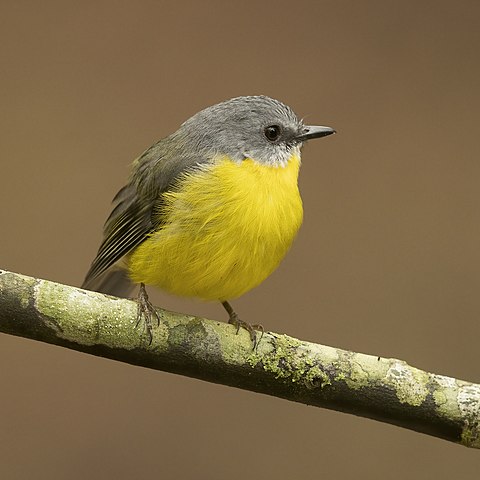 Photo courtesy of JJ Harrison/CC BY-SA 4.0
Photo courtesy of JJ Harrison/CC BY-SA 4.0
The Eastern Yellow Robin (Eopsaltria australis) is a charming medium-sized robin distinguished by its grey back and head, complemented by vibrant yellow underparts. Birds in the southern regions display an olive-yellow rump, while those in the north flaunt a brighter yellow hue. During flight, a delicate pale off-white wing bar catches the eye. Additionally, their black bill adds to their distinctive appearance.
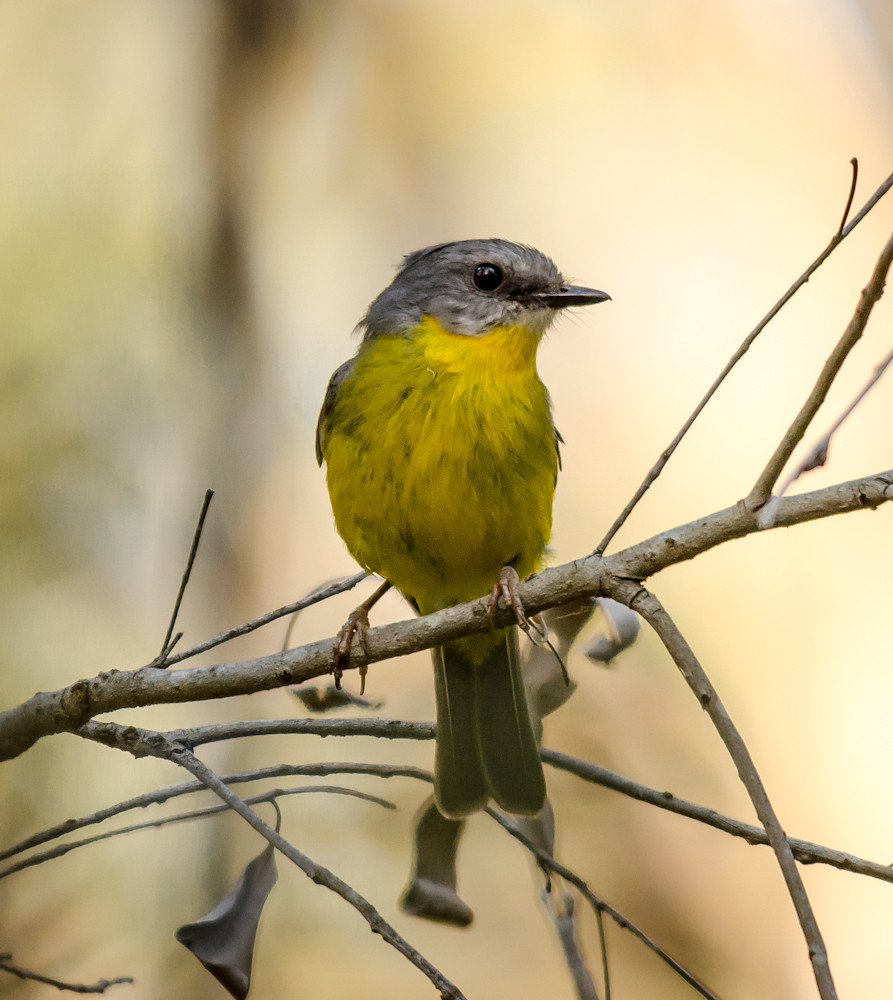 “Eastern Yellow Robin” by James Niland is licensed under CC BY 2.0.
“Eastern Yellow Robin” by James Niland is licensed under CC BY 2.0.
Both males and females share similar plumage color and pattern, with the female being slightly smaller.
Young Eastern Yellow Robins are adorned with rufous-brown plumage and faint paler streaks on their wings as they mature.
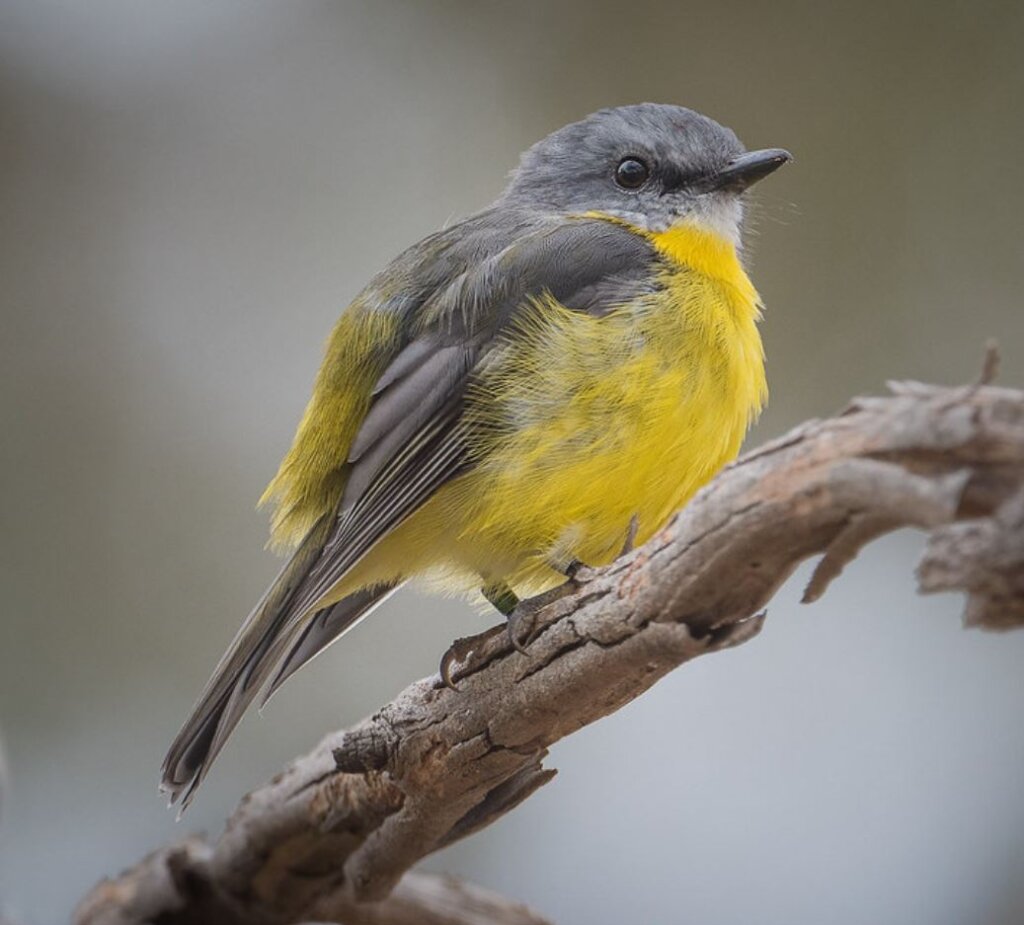 “Eastern Yellow Robin” (cropped) by birdsaspoetry is licensed under CC BY 2.0.
“Eastern Yellow Robin” (cropped) by birdsaspoetry is licensed under CC BY 2.0.
It thrives in a diverse range of environments, from dry woodlands to lush rainforests. These friendly birds are frequently encountered in parks and gardens, often perching on tree trunks or low branches.
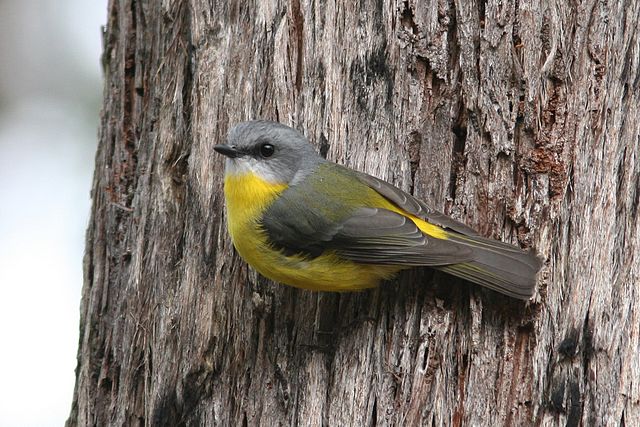 Photo courtesy of Glen Fergus/CC BY-SA 2.5
Photo courtesy of Glen Fergus/CC BY-SA 2.5
As for its habitat, the Eastern Yellow Robin is primarily found in the eastern and south-eastern regions of mainland Australia.
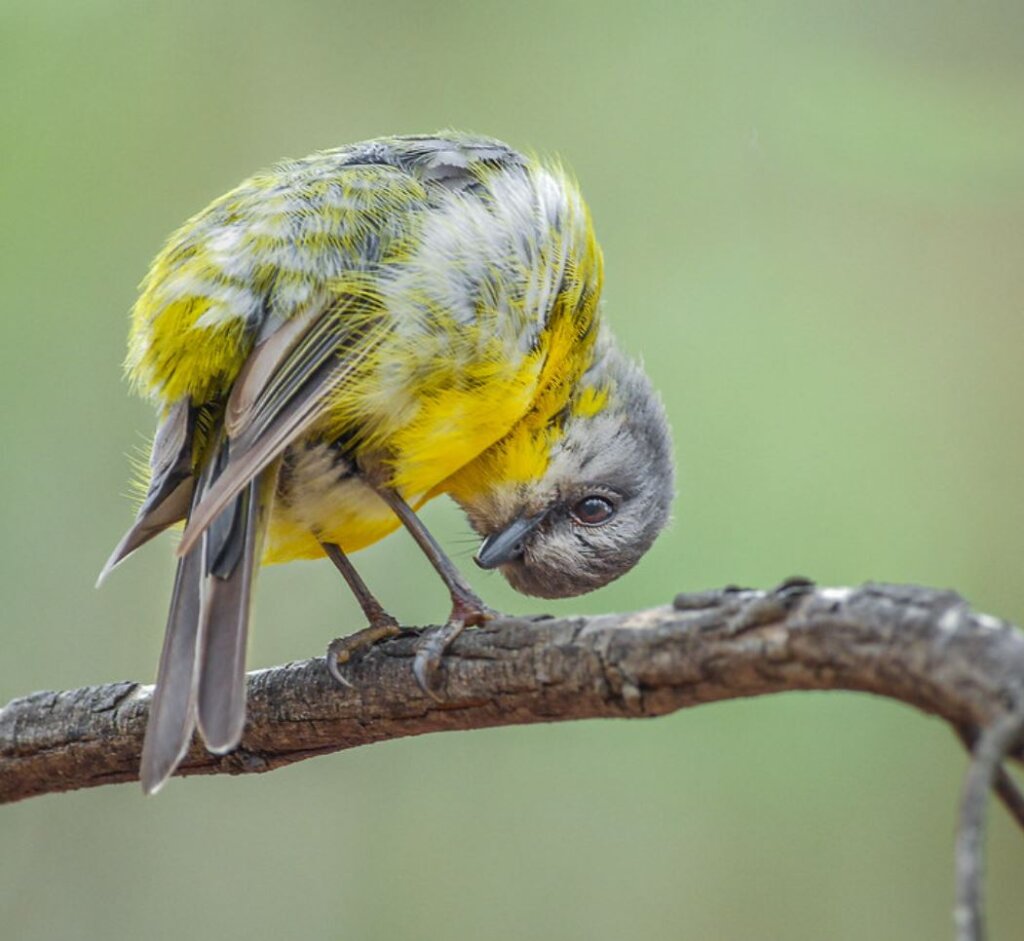 “Eastern Yellow Robin: Just Checkin’” (cropped) by birdsaspoetry is licensed under CC BY 2.0.
“Eastern Yellow Robin: Just Checkin’” (cropped) by birdsaspoetry is licensed under CC BY 2.0.
Feeding mainly on insects, spiders, and other arthropods, the Eastern Yellow Robin executes its hunting strategy by pouncing on prey from low perches, primarily on the ground. Occasionally, they opportunistically accept handouts from picnickers. While they usually forage alone, they may also be spotted in pairs or small family groups.
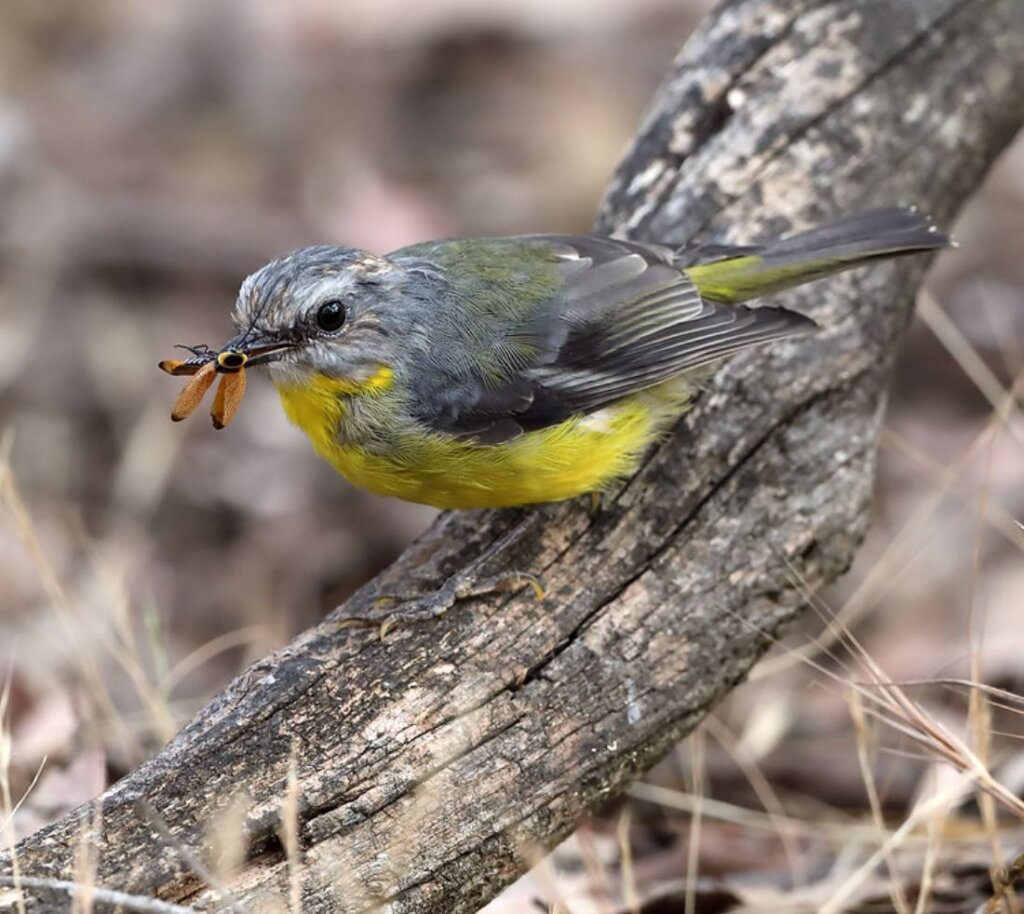 “Eastern Yellow Robin (Eopsaltria australis)” (cropped) by patrickkavanagh is licensed under CC BY 2.0.
“Eastern Yellow Robin (Eopsaltria australis)” (cropped) by patrickkavanagh is licensed under CC BY 2.0.
During the breeding season, Eastern Yellow Robins exhibit remarkable dedication to their offspring, with some breeding pairs laying up to three clutches of eggs. The female constructs the nest, a skillfully woven cup made from bark, grasses, and vegetation, bound together with spider web and lined with finer materials and leaves. These nests are usually built within an upright tree fork, positioned up to 20 meters above the ground but generally within 5 meters. Both parents and occasionally other helpers participate in caring for the young birds.
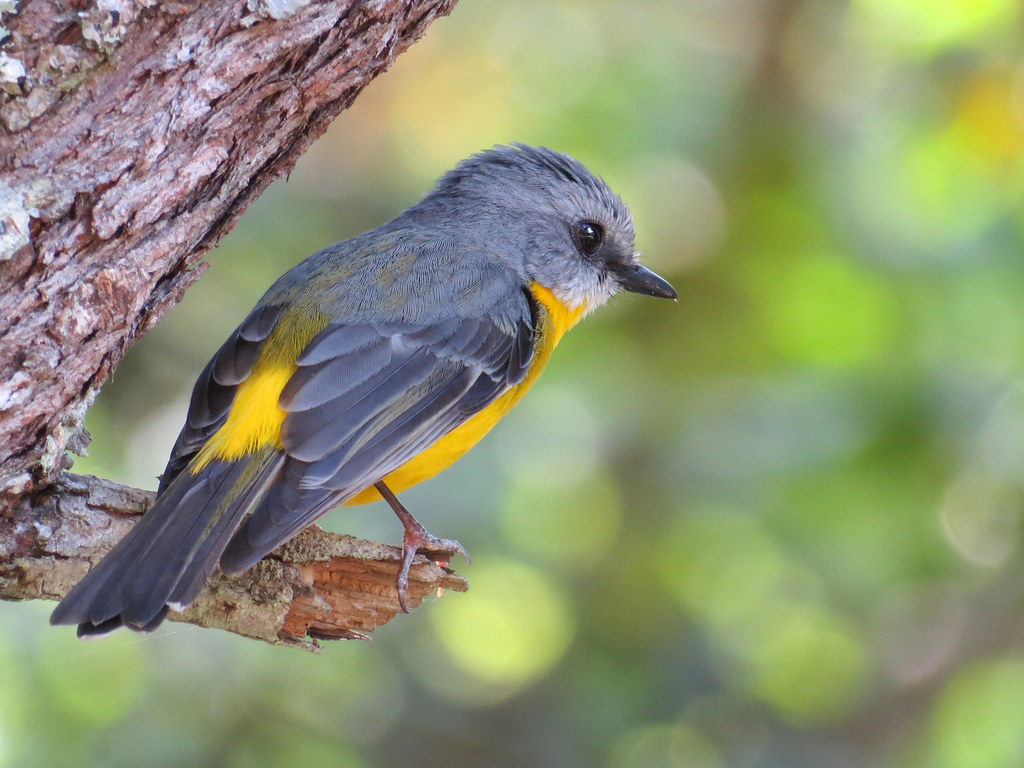 “Eastern Yellow Robin (Eopsaltria australis)” by Graham Winterflood is licensed under CC BY-SA 2.0.
“Eastern Yellow Robin (Eopsaltria australis)” by Graham Winterflood is licensed under CC BY-SA 2.0.
Notable differences between the Eastern Yellow Robin and the Western Yellow Robin (Eopsaltria griseogularis) of the south-west and south of Australia lie in the breast color, with the latter having a grey breast. Another similar species, the Pale Yellow Robin (Tregellasia capito), boasts a smaller size, pale face, and lighter underparts.
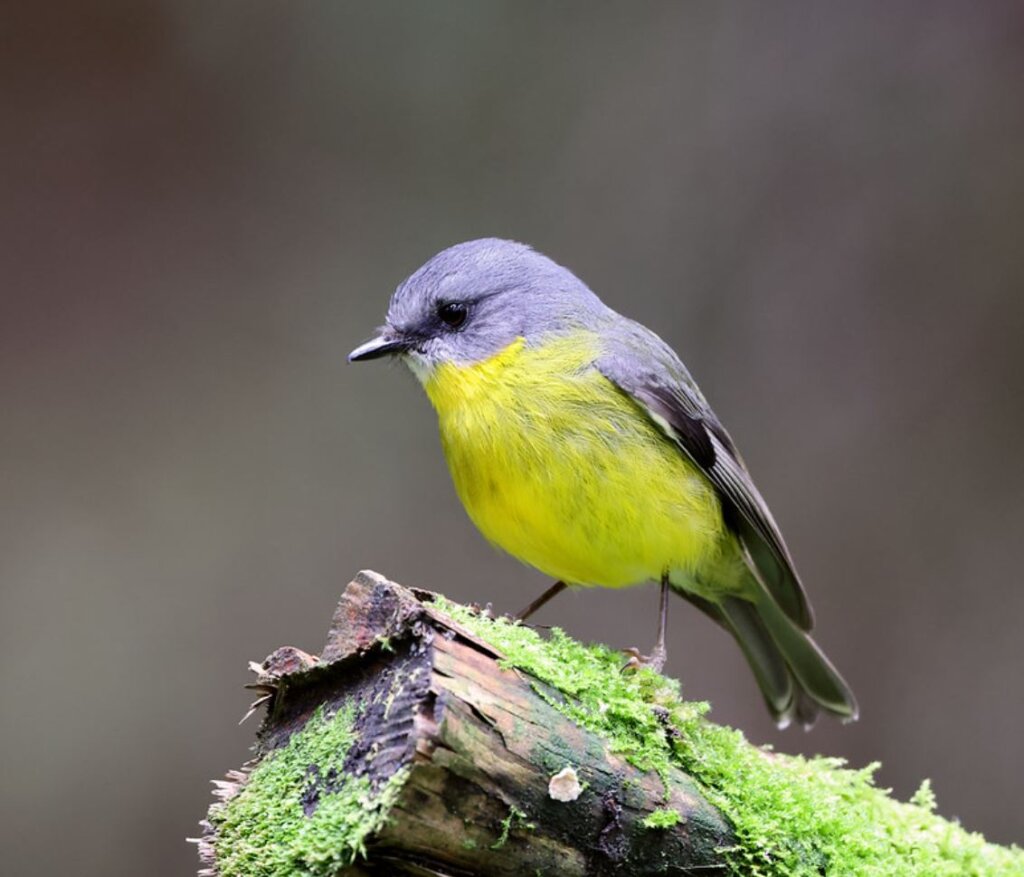 “Eastern Yellow Robin (Eopsaltria australis)” (cropped) by patrickkavanagh is licensed under CC BY 2.0.
“Eastern Yellow Robin (Eopsaltria australis)” (cropped) by patrickkavanagh is licensed under CC BY 2.0.
This bird is regarded as of Least Concern on the IUCN Red List.
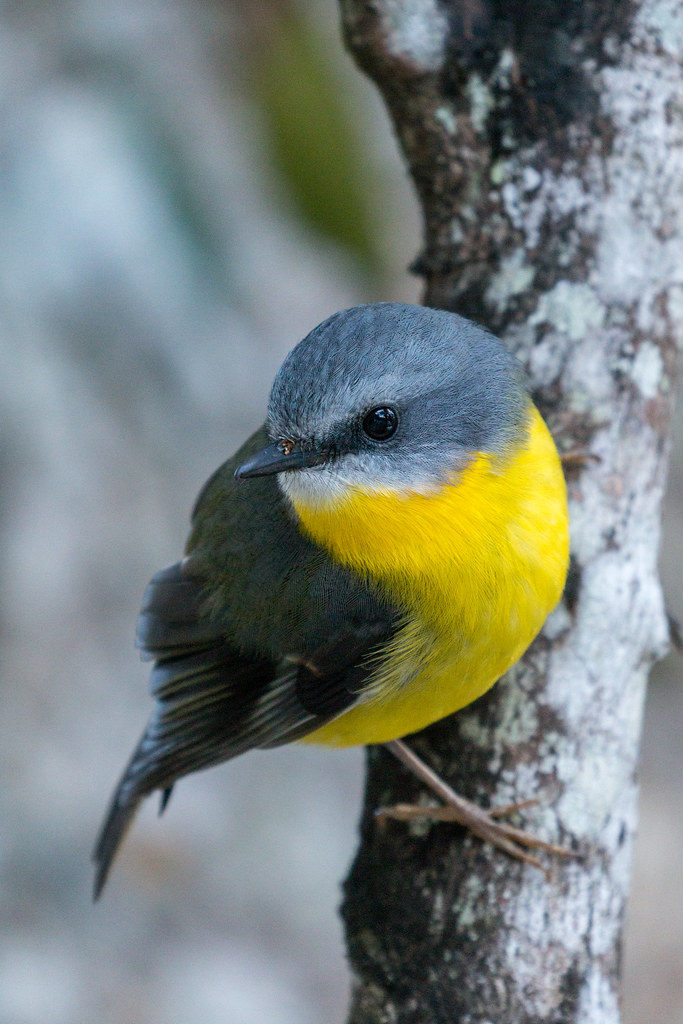 “Eastern Yellow Robin” by timsackton is licensed under CC BY-SA 2.0.
“Eastern Yellow Robin” by timsackton is licensed under CC BY-SA 2.0.
You can listen to this bird right here:
This article uses material from Wikipedia.org which is licensed under the GNU Free Documentation License via Copyright Wikipedia. Images on this page are the sole property of the photographers (unless marked as Public Domain). Please read the license and or contact the photographers directly before using them for any purpose. Thank you all.
A Large Pale-eyed Song Bird Lavishly Decked Out In A Highly Impactful Suit Of Blood Red!
Please SHARE this article with all your bird-loving friends and family.

